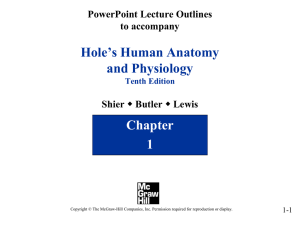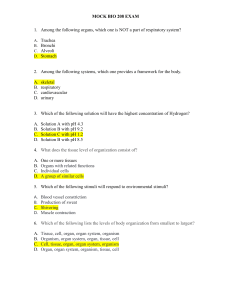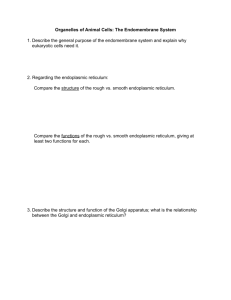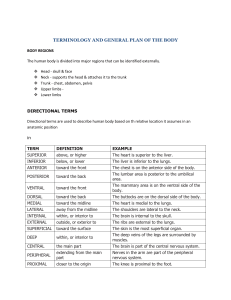New Practice Quiz 1
advertisement
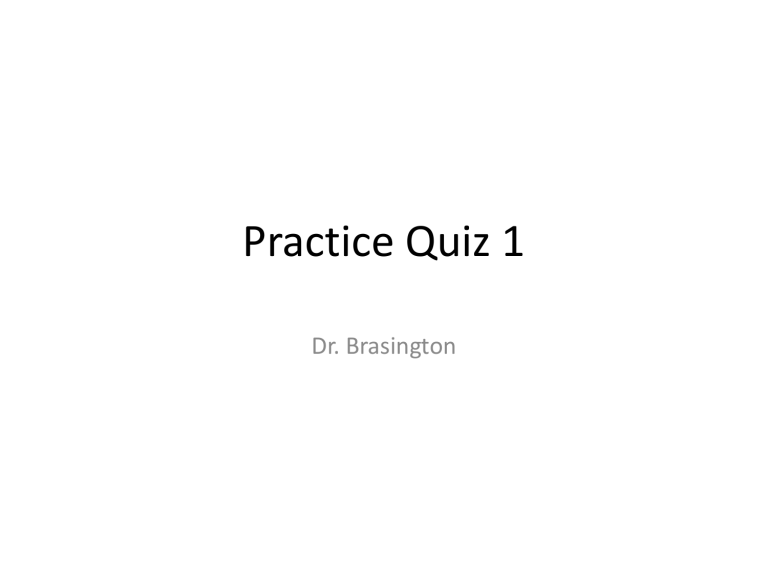
Practice Quiz 1 Dr. Brasington 1. Name the circled region 2. Name the plane 3. Name the circled region 4. Name the region at the arrow 5. Name the region at the arrow 6 & 7 identify the regions 7 6 10 8 9 Identify from the cell & give a function 11 & 12 13 & 14 15 & 16 17 & 18 19 & 20 21 & 22 23. Identify the red label in relation to the blue label in anatomical terms 24. Identify the most specific location 25. Identify the membrane found here 25 24 26. Identify the membrane and the most specific location of the organ 26 27 & 28 Identify the membranes 27 28 29. Identify the organ system to which this organ belongs • 30. ___________is a solution that can resist pH change upon the addition of an acidic or basic components. It is able to neutralize small amounts of added acid or base, thus maintaining the pH of the solution relatively stable. This is important for processes and/or reactions which require specific and stable pH ranges. Buffer solutions have a working pH range and capacity which dictate how much acid/base can be neutralized before pH changes, and the amount by which it will change. • 31. ______ is a hydrogen acceptor. • 32. ______ is a hydrogen donor. • 33. ______ Is the scale to measure the amount of hydrogen in a solution. • 34. ______ is division of the nucleus during the cell cycle • 35. ______ is division of the cytoplasm during the cell cycle. 36. Identify the element 37. How many Protons? 38. How many neutrons? 39. Identify the element 40. How many neutrons? Answer Key • • • • • • • • • • • • • • • • • • • • 1. Axillary Region 21. Nucleolus 2. Frontal Plane 22. Contains RNA 3. popliteal Region 23. Superficial 4. Calcaneal Region 24. Retroperitoneal 5. Palmer Region 25. Parietal Peritoneum 6. Gluteal Region 26. Visceral Peritoneum- Abdominal Cavity 7. Sacral Region 27. Parietal Pericardium 8. Hypogastric Region 28. Visceral Pericardium 9. Left Inguinal Region 29. Nervous System 10. Right Hypochondriac Region 30. Buffer 11. Smooth Endoplasmic Reticulum 31. Base 12. Carbohydrate & lipid synthesis 32. Acid 13. Rough Endoplasmic Reticulum 33. Ph Scale 14. Protein Synthesis 34. Mitosis 15. Centrioles 35. Cytokinesis 16. Participates in mitosis 36. Potassium 17. Golgi Complex 37. 19 18. Prepares and packages 38. 20 19. Mitochondrion 39. Carbon 20. Powerhouse- makes ATP 40. 6

